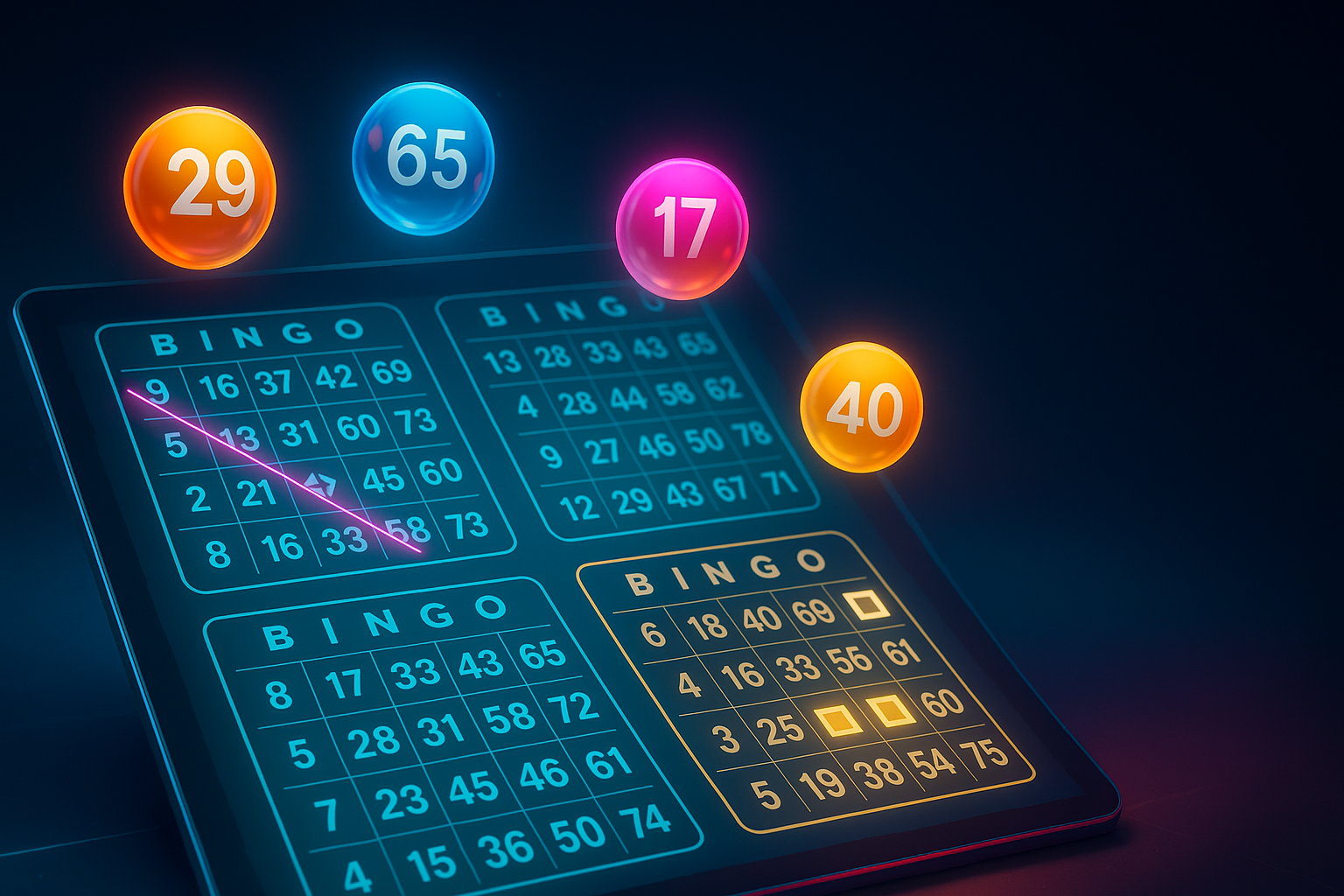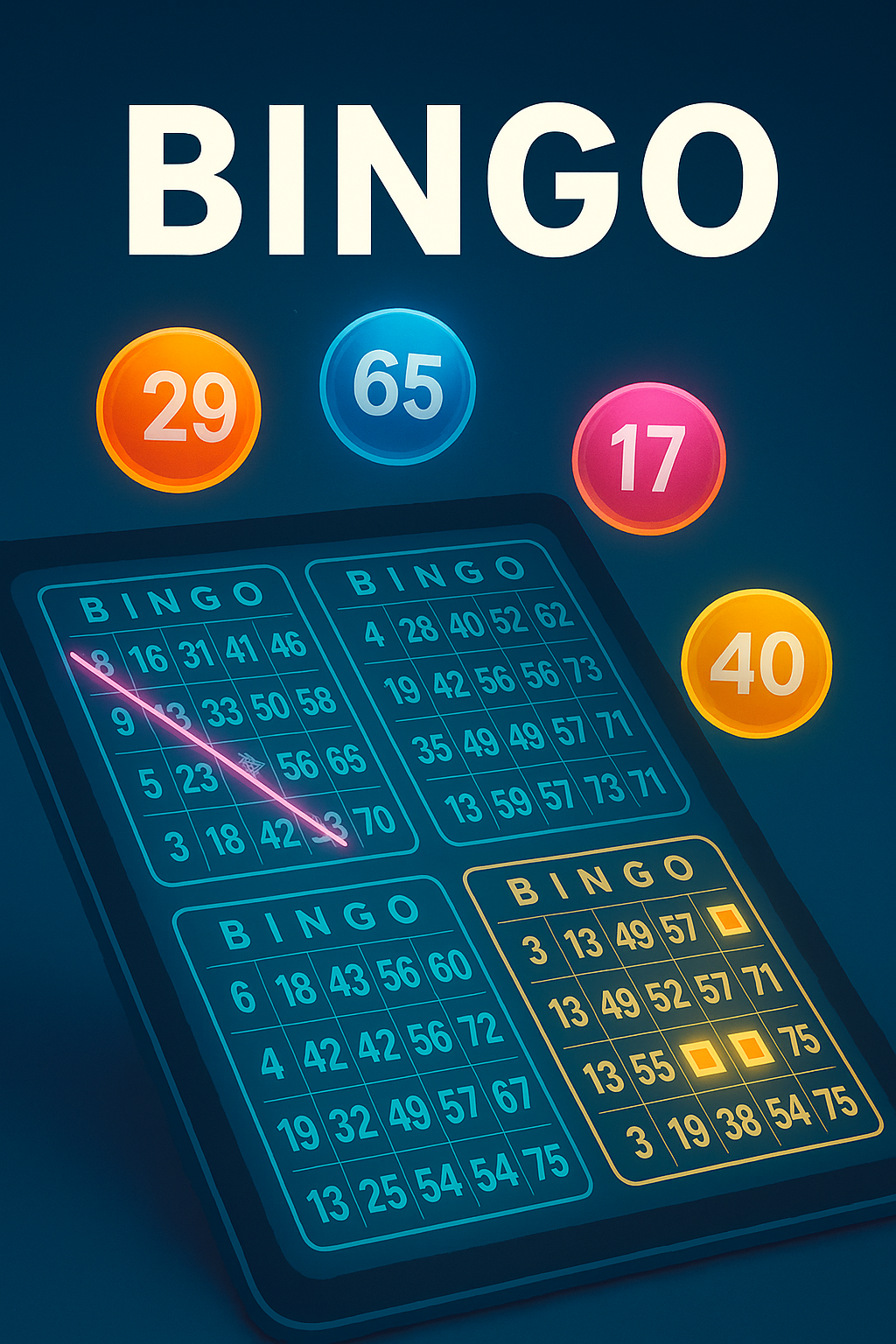I love how eBingo feels in 2025—snappy screens, clean lobbies, auto-daub, and patterns that change the pace game to game. But the more I play, the more I realize my edge doesn’t come from pressing “Buy” faster than everyone else.
It comes from the quiet stuff I do before Ball #1: how I choose my cards, when I jump into a room, and how I keep my eyes locked on the pattern that matters right now.
Here’s my personal playbook—no budgeting talk, just the practical moves that help me spot wins sooner.
My Card Strategy (Granville in Real Life)
When I pick cards, I don’t just grab the first set the lobby throws at me. I do a quick Granville-style check:
- High/Low balance: I want numbers spread across the whole range, not bunched into one band.
- Odd/Even mix: I avoid cards that lean too hard in either direction.
- Ending digits variety: If half my numbers end in the same digit, I ditch that card.
Why I do it: in a fast room, I’m not “predicting” the next ball—I’m maximizing the ways any ball can push me closer to a win line. Balanced cards give me more useful calls across more draws. If a card looks skewed or “clumpy,” I swap it before the countdown hits zero.
Matching My Cards to Game Length (Tippett’s Filter)
I start every session with one question: Is this a long game or a quick hit?
- Long games (blackout/full house, multi-line progressions) → I lean into cards with more mid-range numbers.
- Short games (single line, four corners, simple shapes) → I’m okay owning cards with a few more extremes (very low or very high).
This is not a crystal ball—it’s just a smart filter. Long formats tend to wash out toward the middle over time; quick formats can end before the center “gravity” shows up. I don’t overthink it. I just tilt my selection slightly to match the format and lock in.
Off-Peak Is Underrated (So I Use It)
Some days I want the buzz of a crowded room; most days I want the math on my side. Fewer players means fewer rival cards, which simply increases my shot at being first to hit the pattern. If the lobby shows player counts, I scroll for the smaller rooms or jump earlier/later than typical peak hours. It’s not glamorous, but it’s one of the most consistent edges I use.
Multi-Card, Zero Overlap
If I’m running multiple cards, I try not to “compete” with myself. Overlapping numbers across my own set shrinks my coverage. I’d rather own five different looks than five near-clones. If the app shows previews, I scan fast for duplicates and rotate out the copycats. Variety across my cards means more calls help someone in my set, and that’s the whole point.
Quick habit: If two cards share several identical numbers or the same mini-clusters, I replace one. I’m not chasing perfection—just pushing my spread wider.
Pattern-First Brain (Before Ball #1)
Before the first call, I already know the shape I’m hunting. Four corners? Diagonal? Frame? I mentally “trace” that pattern on my cards. With auto-daub doing the marking, my real job is recognition: catching the moment when my grid is one number away, so I’m primed to shout—or smash that “BINGO” button—the instant it hits.
Two tiny tricks that help me:
- I say the pattern out loud before the game starts. Sounds silly, but it locks my focus.
- I quickly scan each card for two-way finishes (e.g., a number that completes a line and a diagonal). Those are my “hot tiles.”
Focus Rituals (Yes, They Still Matter)
Even with auto-daub, attention wins. I keep my screen uncluttered, notifications off, and sound on. I watch the call feed the way I’d watch a scoreboard: calm eyes, steady rhythm. Missing a call is rare in 2025, but reacting late to a near-win is still a thing—and it’s fixable. The goal is simple: be the first person who realizes the pattern is complete.
Practice With Purpose
When I’m trying a new pattern or adjusting to a faster pace, I jump into low-stakes practice or casual rooms. I’m not there to “score”; I’m there to train my eyes:
- How quickly can I spot a card that’s two away?
- How smoothly can I rotate out duplicate-ish cards in the preview window?
- How fast can I scan for mid-heavy vs. extreme-heavy number sets when I switch formats?
After a few runs, my recognition speed jumps, and that carries over into the rooms that matter.

My 30-Second Pre-Game Checklist
I trust this list more than any hunch:
- Granville balance: high/low, odd/even, mixed endings.
- Overlap sweep: no twin cards across my set.
- Format tilt (Tippett): long game → more mids; quick game → okay with extremes.
- Pattern lock: say the pattern out loud; note any two-way finishes.
- Room choice: if I want the edge, I pick smaller rooms/off-peak.
- Focus mode: sound on, notifications off, clean screen.
That’s it. Thirty seconds. If I can’t complete the checklist before the countdown, I back out and re-enter the next instance. I’d rather start clean than play a messy set.
Common Mistakes I Stopped Making
- Auto-piloting through card selection. The lobby gives you something; that doesn’t mean you should keep it.
- Ignoring the win condition. The pattern dictates tempo. Knowing it changes how I skim my cards.
- Owning five look-alike cards. Cute, but it narrows coverage.
- Joining peak rooms by habit. Fun vibe, tougher math.
- Letting the phone steal my focus. I’m here to win lines, not ping pong between apps.
My Personal TL;DR
- I pick balanced cards and avoid clones.
- I match my numbers to the game length (mids for long games, extremes are fine for quick hits).
- I favor off-peak when I want real edge.
- I lock the pattern in my brain before play.
- I keep my focus tight and my practice purposeful.
None of this “beats randomness”—that’s not the goal. What I’m doing is giving myself the best version of chance: smarter card sets, clearer pattern recognition, better room selection, and sharper attention. And when my grid heats up, I’m ready to see it first—and claim it fast.
See you in S5 Casino’s eBingo room, Ka-S5. If you hear a loud “B-I-N-G-O,” there’s a good chance it’s me.





